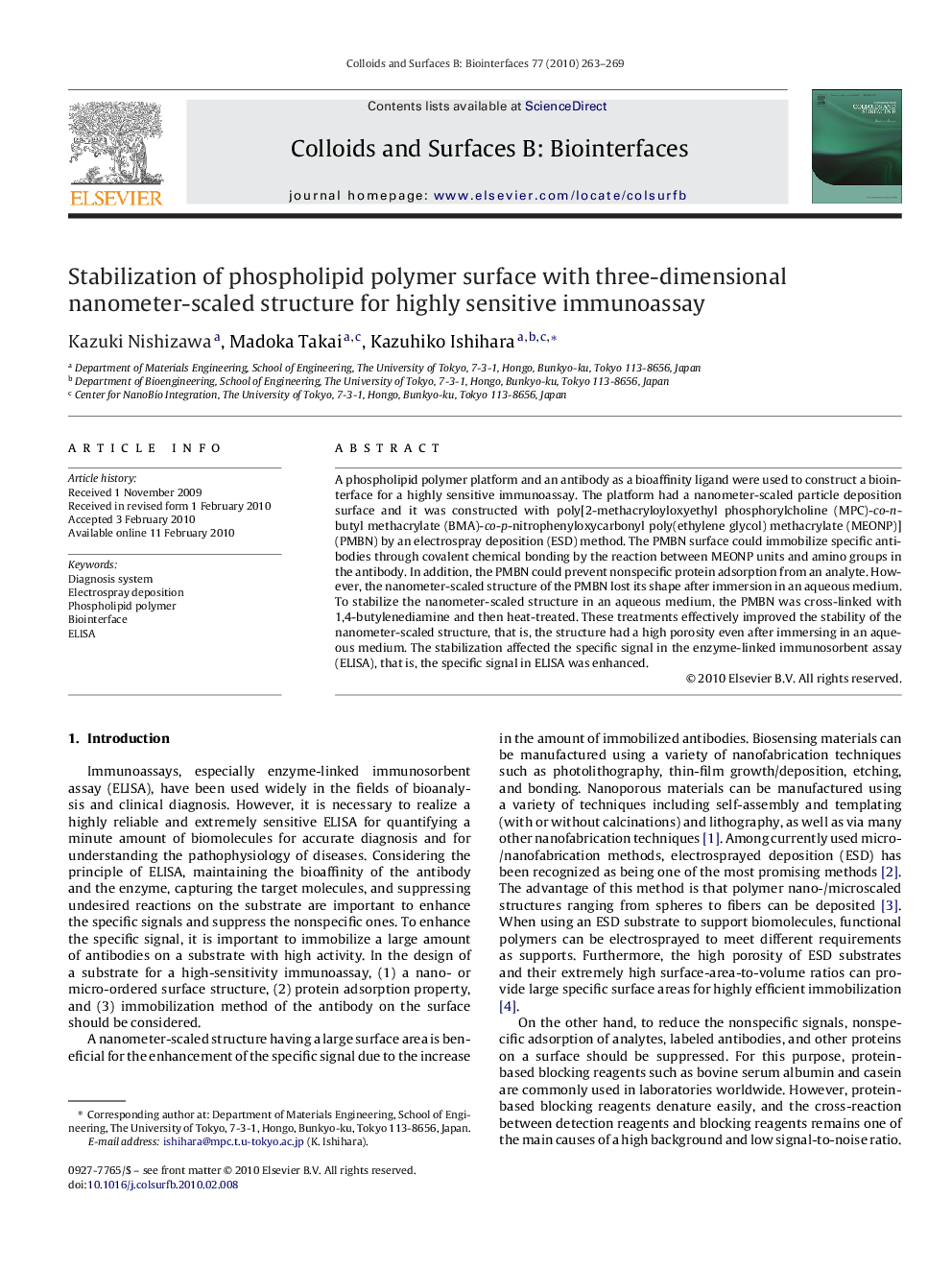| Article ID | Journal | Published Year | Pages | File Type |
|---|---|---|---|---|
| 601505 | Colloids and Surfaces B: Biointerfaces | 2010 | 7 Pages |
A phospholipid polymer platform and an antibody as a bioaffinity ligand were used to construct a biointerface for a highly sensitive immunoassay. The platform had a nanometer-scaled particle deposition surface and it was constructed with poly[2-methacryloyloxyethyl phosphorylcholine (MPC)-co-n-butyl methacrylate (BMA)-co-p-nitrophenyloxycarbonyl poly(ethylene glycol) methacrylate (MEONP)] (PMBN) by an electrospray deposition (ESD) method. The PMBN surface could immobilize specific antibodies through covalent chemical bonding by the reaction between MEONP units and amino groups in the antibody. In addition, the PMBN could prevent nonspecific protein adsorption from an analyte. However, the nanometer-scaled structure of the PMBN lost its shape after immersion in an aqueous medium. To stabilize the nanometer-scaled structure in an aqueous medium, the PMBN was cross-linked with 1,4-butylenediamine and then heat-treated. These treatments effectively improved the stability of the nanometer-scaled structure, that is, the structure had a high porosity even after immersing in an aqueous medium. The stabilization affected the specific signal in the enzyme-linked immunosorbent assay (ELISA), that is, the specific signal in ELISA was enhanced.
